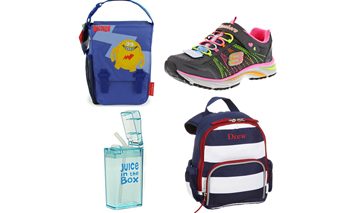Once the school year starts, lugging around heavy backpacks will be a common occurrence. And unfortunately, back pain won’t be far behind. Dr. Mark Halpern, a Canadian chiropractor, has seen thousands of students with this problem, and it happens every school year.
Muscles tighten up due to the pressure on the spine, and everything from the nerves to the organs, and even the digestive system, get damaged. As a result, many students can suffer from poor digestion, heartburn, and even bladder infections in addition to the back pain. Here’s what Dr. Mark Halpern says about the problem, and how you can help. An important read before your kiddos head to school.
The Problem
For the majority of students, sitting for prolonged periods at a desk studying or using a computer, carrying large backpacks and living with deadlines are a fact of life. All of which can cause neck, mid-back, or lower back pain as well as anxiety, exhaustion, and digestive problems. Most people suffer through and wait for it to disappear. If no treatment is done, and the area is left to rest, the pain will eventually go away, but the area is not healed.
When it comes to carrying a backpack, there are some very simple guidelines to follow which will help reduce the amount of stress put on the spine.
Warning signs that a backpack is too heavy
If you see any of the following signs in your kids when wearing their backpack, it’s likely too heavy for them and will cause problems:
- Change in posture when wearing the backpack
- Struggling to put on or take off the backpack
- Pain when wearing the backpack
- Tingling or numbness and red marks
What To Do About It
Students should wear both straps, wear the backpack over the strongest mid-back muscles, lighten the load, and use proper lifting techniques.
And here’s what to look for when buying a backpack:
- Ergonomically designed features that enhance safety and comfort
- A padded back to enhance comfort and reduce back, shoulder, and underarm pressure
- Hip and chest belts to help transfer some of the weight from the back and shoulders to the hips and torso
- Multiple compartments to better distribute the weight in the backpack, keep items secure, and ease access to the contents
- Compression straps on the sides or bottom of the backpack to stabilize the articles and compress the contents so that the items are as close to the back as possible
Check out just how much all that stuff you haul around every day actually weighs:
| Item | Weight | Item | Weight | ||
| Shoes | 2 lbs | Wet towel | 2 lbs | ||
| 2 binders | 3 lbs | Sports gear | 10 lbs | ||
| Water bottle | .5 lbs | 6 text books | 6 lbs | ||
| Laptop computer | 6 lbs | Lunch/snacks | 2 lbs |
If you’re hauling around more than 15% of your body weight, you need to lighten it up.
And finally, teachers and schools should ensure only the needed books go home each night and that kids stretch for one minute every twenty minutes. Parents should ensure that students clean their bags out each night, as most kids carry a lot of stuff they never take out and don’t actually need.
Here’s to a healthier, pain-free school year!
Thanks to Dr. Mark Halpern for helping us with this article. You can find him at thetorontochiropractor.com
Tagged under: back to school,knapsacks,the best backpacks for back to school,back pain,knap sack pain,chiropractor,textbooks
Category: back-to-school






